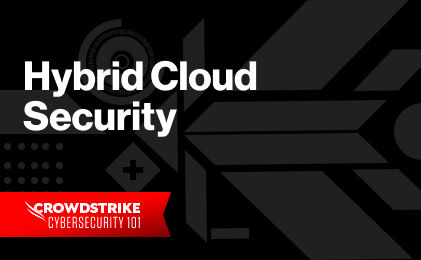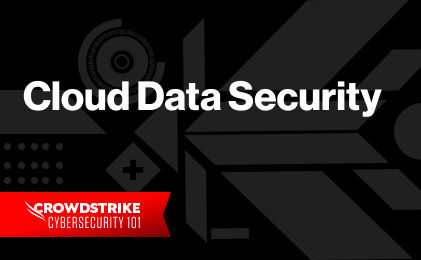Understand CNAPPs with Our Guide
Understand CNAPPs with Our Guide
What Is Hybrid Cloud?
A hybrid cloud combines elements of a public cloud, private cloud and on-premises infrastructure into a single, common, unified architecture allowing data and applications to be shared between the mixed IT environment. In a hybrid cloud environment, organizations have the option to run and scale workloads in the optimal setting, as well as the flexibility to move workloads between different environments quickly and easily.
For example, with a hybrid cloud model, organizations are able to leverage the public cloud for high-volume, low-risk activity, such as hosting web-based applications like email or instant messaging. Meanwhile the private cloud can be reserved for functions that require greater security, such as processing payments or storing personal data. In so doing, the organization is able to capitalize on the cost savings of a public cloud while also maintaining a higher level of security or compliance for select functions.

The Complete Guide to CNAPPs
Download CrowdStrike's Complete Guide to CNAPPs to understand why Cloud-Native Application Protection Platforms are a critical component of modern cloud security strategies and how to best integrate them to development lifecycles.
Download NowHybrid Cloud Infrastructure Components
Every hybrid cloud environment contains the following three components:
- Public cloud services delivered and supported via the public internet through a third-party cloud provider. Public cloud access is provided through a subscription model, such as platform-as-a-service (PaaS), infrastructure-as-a-service (IaaS) or software-as-a-service (SaaS). Examples of prominent public cloud providers include Amazon Web Services (AWS), Google Cloud Platform (GCP) and Microsoft Azure
- Private cloud services, which serve the same purpose as public clouds but are dedicated to just one customer. They provide a cloud infrastructure for exclusive use by one business, organization or government entity. Because the private cloud is not shared with any other users, this type of network tends to provide far greater control, privacy and security — as long as the user has adopted a comprehensive security strategy specifically designed for the cloud.
- On-premises infrastructure, or a traditional computing environment, wherein select services are run, managed and maintained using hardware and servers owned and operated by the organization.
Learn More
The key difference between public and private cloud computing has to do with access. Learn about the advantages and disadvantages of both the public and private cloud.
Hybrid Cloud vs. Multi Cloud
Though sometimes used interchangeably, hybrid and multicloud environments are two distinct models.
In short, a hybrid cloud creates a single environment consisting of public, private and on-prem infrastructure elements and services. A multicloud environment, on the other hand, unites two or more public cloud instances but does not integrate private cloud services or an on-prem component.
Based on this definition, it is possible for a hybrid cloud model to also be a multicloud model if the environment incorporates private cloud, on-prem and more than one public cloud instance.
How Do Hybrid Clouds Work?
Establishing a hybrid cloud architecture requires coordination, orchestration and integration.
Initially, organizations created a hybrid cloud architecture by migrating some elements of the on-premises infrastructure into a private cloud environment. They would then connect that private cloud environment to a public cloud hosted by a third-party cloud service provider (CSP) using an off-the-shelf hybrid cloud solution or middleware.
Today, hybrid cloud architecture has evolved to focus on enabling greater flexibility and portability of workloads. As such, in a more modern approach, the hybrid environment is enabled by the CSP through extended public cloud services that can be integrated within a private data center.
In short, hybrid cloud platforms can connect public and private resources in different ways at different points. But, regardless of each organization’s individual strategy, the organization must possess the following capabilities to effectively integrate disparate components into a single environment:
- A strong network connection, which typically involves a wide area network (WAN) or other dedicated networking service for additional security.
- Creating a virtualization layer or hypervisor on top of on-premises resources to create and support virtual machines as well as container-based workloads.
- Installing a private cloud software layer or infrastructure-as-a-service (IaaS) to run, manage, connect and protect all apps and components within the cloud.
- Integrating the software or IaaS into an application programming interface (API) from a public cloud provider, such as Amazon Web Services, Google Cloud or Microsoft Azure.
- A container orchestration platform, most commonly Kubernetes, to automatically deploy applications across all cloud environments.
Learn More
Built in the cloud for the cloud, Falcon reduces the overhead, friction and complexity associated with protecting cloud workloads and meeting compliance. Get one platform that works for all workloads — private, public and hybrid cloud environments.
Benefits and Challenges of a Hybrid Cloud Platform
A hybrid cloud environment offers several important benefits to the business, as well as potential shortcomings:
| Benefits | Description | Challenges | Description |
|---|---|---|---|
| Flexibility | A hybrid cloud computing model allows the organization to run a workload in the optimal environment, as well as shift that workload based on capacity, demand or costs. | Initial Investment | It is not uncommon for organizations transitioning into a hybrid cloud to encounter barriers when coming from multiple different environments. This can lead to high initial investment and tool maintenance costs. |
| Cost Efficiency | In any cloud-based model, capacity can expand and shrink as needed with fluctuating demand. Consumption-based pricing helps companies save money on physical data center space, power allocation and hardware costs when they pay for what they use. Adopting a hybrid model, in particular, helps organizations optimize their costs by selecting the best computing environment for each task. | Training | When adopting a hybrid cloud, stakeholders will need additional training to fully operate efficiently. Stakeholders include members in the IT team, employees from other teams, vendors, and any other type of business user. |
| Elasticity | A hybrid cloud environment is dynamic, meaning that resources can quickly be adjusted and reallocated based on current needs. Further, in the case of unexpected surges in demand, the business can manage such spikes through a public cloud service. | Visibility | A hybrid cloud contains applications, systems, processes, and platforms that make it hard to achieve full visibility into all components. This lack of visibility might cause your team to miss a critical issue or important opportunity. |
| Enhanced Security and Compliance | A unified hybrid cloud platform helps the organization take a holistic approach to cybersecurity and regulatory compliance. Since the organization is operating in a single IT environment, companies can develop a comprehensive strategy and deploy tooling consistently across the entire environment. A hybrid cloud approach also ensures that the organization properly hosts sensitive information, such as customer data or patient records, in a private cloud environment as dictated by government regulations or industry guidelines. | Inefficiency | When organizations use multiple different tools and software that may live in different unique environments, it might make these functional silos keep organizations from achieving their cloud-related goals. |
| Business Agility | A unified hybrid cloud platform can help expand adoption of Agile and DevOps methodologies, which in turn can help speed time to market. | Lack of Synchronization | It is very possible that on-premise and public cloud environments are incompatible, which can make synchronizing data transmission very difficult. |
5 Hybrid Cloud Use Cases
The cloud has become a necessary component for most organizations’ long-term strategic growth plans.
A hybrid cloud model, in particular, offers added flexibility as organizations can mix and match elements from various cloud environments, as well as a traditional on-prem infrastructure, based on each scenario. Below are some common use cases enabled by the cloud and ideal for a hybrid cloud environment:
1. Digital Transformation: Cloud services provide the foundation for a variety of advanced analytics initiatives. However, in some cases, legacy applications or regulations may prevent the company from shifting the entire IT environment to the cloud. The hybrid cloud provides a compromise in that the organization can isolate elements that must be hosted in a private data center or that cannot be supported by cloud technology. At the same time, the hybrid model unites these different environments into a single architecture, enabling the IT team to maintain optimal visibility of the entire network.
2. Dynamic Workloads: The hybrid model is especially valuable to organizations with highly variable demand or highly changeable workloads. In a hybrid model, it is possible to use public cloud computing power and storage to “cloudburst” – or to scale resources quickly and cost-effectively in the event of an unplanned surge in demand. You can also separate critical workloads with sensitive information in the private cloud to ensure data security, while running all other applications in the public cloud.
3. High Availability (HA) and Disaster Recovery (DR): The inherent flexibility of the cloud naturally reduces the need for high availability (HA) and disaster recovery (DR) plans. In a hybrid cloud deployment, organizations can back up data in the cloud and use these in the event of a data center disruption — eliminating the need for costly, resource heavy on-prem backup servers.
4. Big Data Processing: Sometimes, data comes in huge pools that might make it difficult to process. You can leverage the hybrid cloud by running big data analytics in scalable public cloud resources and keep this sensitive data behind a firewall using a private cloud
5. Temporary Processing Capacity: Many organizations spend a lot of money investing in equipment they will only need temporarily. A hybrid cloud allows for allocation of public cloud resources to accomplish short-term projects. This costs a lot less than having on-premise IT infrastructure.
Expert Tip
Is a Hybrid Cloud Right for You?There are thousands of different types of organizations with different needs and priorities. Not all organizations will be better off with a single individual cloud environment. Some might be better off with either a public cloud, others with a private cloud, and others with a hybrid cloud. The most important part of choosing a type of environment is recognizing and prioritizing your security and cloud needs as well as long-term cloud and organizational goals.A hybrid cloud might be right for you if your organization shares these 2 characteristics:
- Store highly sensitive information, so they want more control over their data to ensure it is kept safe.
- Need for a cost-effective way to scale operations to meet demand spikes and accommodate long-term growth without sacrificing security.





